Renovation to the Royal Ontario Museum
Studio Daniel Libeskind
Toronto, Ontario
| Terri Meyer Boake BES BArch MArch LEED AP Professor :: School of Architecture :: University of Waterloo |
| Renovation to the Royal Ontario Museum Studio Daniel Libeskind Toronto, Ontario
|
| Project Information: |
Design
Architect: Studio Daniel Libeskind Article in Canadian Architect Magazine, January 2006: Ordering Chaos |
Project
Images: ... how do we get from the napkin sketch
to the real thing???
|
|
| |
|
Varying
versions of the crystal are modelled by the architects, until approvals
are reached. |
A
complex colour cutaway model is on display at the ROM in the exhibit depicting
the architectural project. |
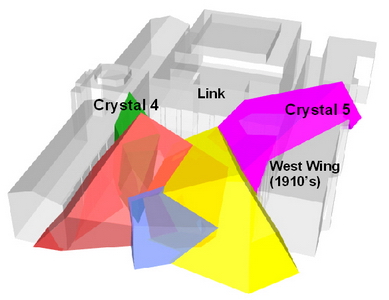 |
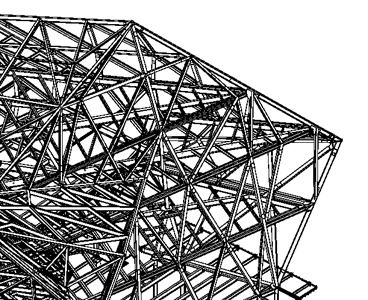 |
The crystals are conceived in 3-D. Traditional 2-D drawings are virtually
useless in this project. |
The diagrid is realized as a complex axonometric drawing
that accounts for every member, connection and can be broken down into
construction sequences. |
The fabricators also use traditional models of the floors created from
plan drawings of the structural steel framing. |
Each face of the diagrid is laid out in plan, and these
are also used to create massing models to assist in visualizing the structure. |
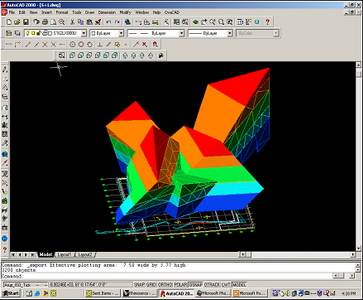 |
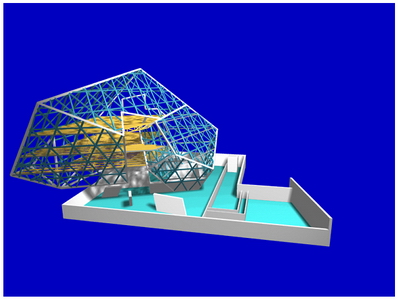 |
A screenshot showing the floors as they cut through the diagrid/crystals. |
Part of an assembly movie that explains the different parts
of the structural system. |
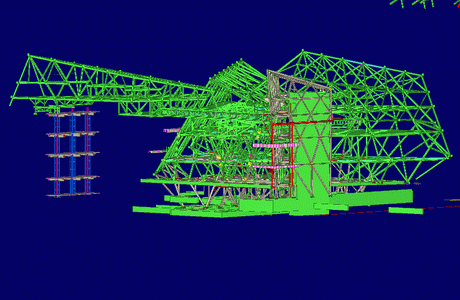 |
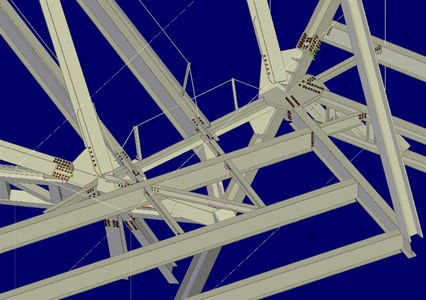 |
The fabricator's wire frame drawing of the "whole job". |
Each joint is detailed using software that incorporates
loading requirements. |
| |
|
Site
work on the steel components. |
The
pieces are shipped to the site in limited quantities to suit the erection
sequence as on site staging area is quite limited. This stair component
will be lifted into the crystal that rings the concrete core. |
| |
|
Ironworkers
preparing the steel shelf angles and connectors to accept the steel floor
framing at the concrete elevator core. |
Overall
view of steel as of August 31, 2004. |
| |
|
Closer
view of the steel crystal that surrounds the concrete core. |
Large
truss elements comprised of HSS members ring this crystal which holds
the central stair elements. |
| |
|
Closer
view of steel framing, early September 2004. |
Connection
element at top of "vertical" member. All of the steel is considered
"structural", rather than AESS (architecturally exposed structural
steel), so it is finished with the knowledge that all of it will be hidden
by fire protective coverings. |
| |
|
These images are for educational use only and may not be reproduced commercially without written permission. tboake@sympatico.ca |
Updated February 11, 2021